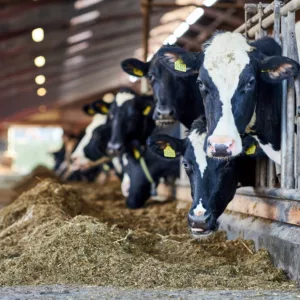Rod Martin knows how efforts to mitigate milk fever have evolved over the years. He shared his decades of experiences in a recent Dairy Herd Management article and offered advice for the future.
Rod, a Protekta dairy nutritionist with more than 35 years of experience and unparalleled insights into managing hypocalcemia, says that back in the ‘80s the focus was on minimizing dietary calcium levels to address milk fever. But the daily calcium limits suggested by the research were not practical in the field.
In the early ‘90s, the correlation between high potassium diets and increased milk fever rates was discovered. Consequently, producers and nutritionists quickly adapted low-potassium diets utilizing forages such as grass hay and corn silage. As hypocalcemia research continued to advance through the next two decades, negative dietary cation-anion difference (DCAD) diets evolved. They not only incorporated potassium but also added sodium, chloride and sulfur to the dietary analysis.
Fast forward to the 2020s. Milk fever and subclinical hypocalcemia mitigation is focused on dietary phosphorus and practical strategies to minimize daily phosphorus intake.
All this progress over the years has led to a low incidence of clinical milk fever, but subclinical hypocalcemia is still unacceptably high. To continue on the right path to controlling this metabolic disorder, more attention needs to be paid to excess phosphorus, Rod says.
Read the full story about the evolution of milk fever mitigation in Dairy Herd Management.
After that, read our summary of the science behind the role of dietary phosphorus in improving blood calcium and preventing hypocalcemia. It details a recent presentation by Pat Hoffman, Professor Emeritus at the University of Wisconsin.
Rod Martin’s article first appeared in Dairy Herd Management. A presentation on the science behind the role of dietary phosphorus in improving blood calcium and preventing hypocalcemia was given by Pat Hoffman, Professor Emeritus, University of Wisconsin.



